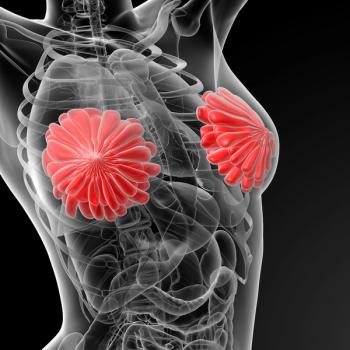
Oncology NEWS International
- Oncology NEWS International Vol 12 No 3
- Volume 12
- Issue 3
Capecitabine/Docetaxel Is More Cost Effective Than Docetaxel Alone in Pretreated Disease
SYDNEY, Australia-Capecitabine (Xeloda) plus docetaxel (Taxotere) is a cost-saving treatment for patients with advanced breast cancer previously treated with an anthracycline-containing regimen, results of an economic analysis suggest. The combination, shown in a pivotal randomized trial to provide a significant survival benefit over docetaxel alone in advanced breast cancer, is also associated with a decrease in total treatment costs, according to Carlene Todd, health economist with Roche Products Pty. Ltd., Sydney, Australia.
SYDNEY, AustraliaCapecitabine (Xeloda) plus docetaxel (Taxotere) is a cost-saving treatment for patients with advanced breast cancer previously treated with an anthracycline-containing regimen, results of an economic analysis suggest. The combination, shown in a pivotal randomized trial to provide a significant survival benefit over docetaxel alone in advanced breast cancer, is also associated with a decrease in total treatment costs, according to Carlene Todd, health economist with Roche Products Pty. Ltd., Sydney, Australia.
"It’s very rare with a new oncology product to have a survival gain and a cost saving," Ms. Todd said. "Usually, there is an additional cost associated with the addition of a therapy to an existing treatment."
Since November 2002, capecitabine/docetaxel combination therapy has been listed on the Australian Pharmaceutical Benefits Scheme (PBS) for advanced breast cancer patients who failed anthracycline-containing chemotherapy. The PBS includes more than 500 drugs subsidized by the Australian government. To be listed, a drug must be both efficacious and cost effective, Ms. Todd explained.
Based on Phase III Trial
The pharmacoeconomic analysis of capecitabine/docetaxel was based on results of the recently published randomized phase III clinical trial including 511 patients with anthracycline-pretreated advanced breast cancer (O’Shaughnessy J, et al: J Clin Oncol 20: 2812-23, 2002). The trial compared combination therapy (capecitabine 1,250 mg/m2 twice daily for 14 days, plus docetaxel 75 mg/m2 every 3 weeks) vs docetaxel alone (100 mg/m2 every 3 weeks).
Capecitabine/docetaxel increased overall mean survival by 2.7 months vs docetaxel alone (P < .05). The mean duration of therapy was also longer for the combination (129 vs 98 days) reflecting a time to progression 2.4 months longer than with docetaxel alone (P < .001).
Investigators prospectively collected pharmacoeconomic data on parameters including number of infusions, drug dosage, and hospitalizations. Unit costs were based on published estimates for Australia.
Total cost in Australian dollars ($A), per patient per course of treatment, was $A18,581 for the combination, vs $A18,739 for docetaxel alone. (At the time of the study, $A1 equaled $0.55 US.)
This represented a saving of $158 Australian or approximately $89 US. The total cost figure included drug acquisition, preparation and administration, outpatient/specialist visits, and hospitalizations or consultations for adverse events.
What Drove Costs Down?
The main driver of cost reduction, according to Ms. Todd, was a lower cumulative dose of docetaxel in the combination arm (658 mg vs 848 mg for docetaxel alone), despite a longer duration of treatment. The savings came despite more hospitalizations for adverse events in the capecitabine/docetaxel arm (143 vs 136 for docetaxel alone).
Cost-effectiveness analysis revealed a gain of 0.22 discounted life-years per patient treated with combination therapy, and a gain of 0.20 progression-free life-years gained. "When we adjusted a number of factors in a sensitivity analysis, we still found that the result was favorable," Ms. Todd. said
This further analysis included adjusting the following: overall survival and time to progression according to 95% confidence intervals; the average docetaxel dosage used in Australian clinical practice (86.5 mg/m2), and equivalent dosages in each arm (75 mg/m2).
Articles in this issue
almost 23 years ago
Elevated Serum HER2/neu Linked to Lower Response to Hormone Therapyalmost 23 years ago
Are We Closing in on a Blood Test for Breast Cancer?almost 23 years ago
Trial Lays Groundwork for All-Oral Capecitabine/Vinorelbinealmost 23 years ago
Idarubicin Paired With Capecitabine as Entirely Oral First-Line Treatmentalmost 23 years ago
Fulvestrant Is Effective for Patients Failing Other Hormonal Therapyalmost 23 years ago
Double Transplant Increases Survival in Myeloma Patientsalmost 23 years ago
Smoking Worsens Prognosis in Cervical Cancer PatientsNewsletter
Stay up to date on recent advances in the multidisciplinary approach to cancer.































































































